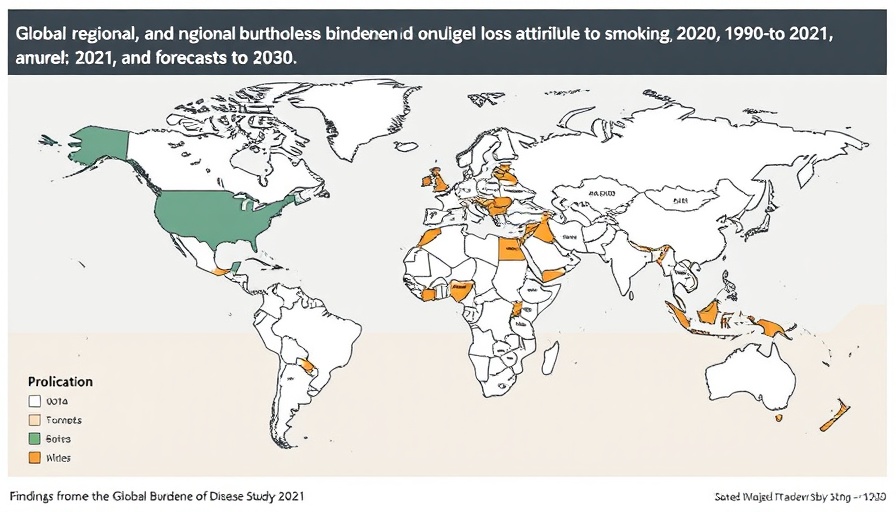
The Hidden Cost of Smoking: A Growing Burden of Blindness and Vision Loss
The alarming impact of smoking on public health extends beyond physical ailments often associated with tobacco use. Recent research reveals that smoking is a significant contributor to blindness and vision loss (BVL) globally, with projections indicating this issue will worsen by 2030. The findings from the Global Burden of Disease Study 2021 highlight stark statistics and underscore the need for urgent action.
Understanding the Burden of Smoking-Related Vision Loss
Between 1990 and 2021, the global years lived with disability (YLDs) attributable to blindness and vision loss caused by smoking dramatically increased, indicating that smoking continues to adversely affect visual health worldwide. In 2021, there were an estimated 284.03 thousand YLDs related to BVL attributable to smoking. This encompassed severe conditions like cataracts and age-related macular degeneration (AMD), conditions that are increasingly prevalent among smokers.
Gender Disparities: Who is Most Affected?
Remarkably, the burden of smoking-related BVL is not evenly distributed. Males are disproportionately affected, with much higher rates of smoking-related eye diseases compared to females. This trend reflects a broader behavioral pattern: men are more likely to engage in smoking and thus face higher health risks. As tobacco use rates decline in many regions, targeted efforts must focus on addressing these gender disparities and educating vulnerable populations about the dangers.
The Link Between Smoking and Eye Health
The chemicals in tobacco smoke have dire effects on ocular tissues. Smokers are two to three times more likely to develop cataracts compared to non-smokers, and the risk of AMD increases significantly amongst this group as well. These diseases, especially AMD, pose a significant threat to the quality of life, as they severely impact central vision required for daily activities. Health experts recommend regular eye exams to monitor and catch these afflictions early, particularly for those who smoke.
Regional Differences in Disease Burden
Regionally, the study notes that South Asia, Southeast Asia, and North Africa exhibit the highest burdens of smoking-related vision loss. In these areas, the interplay of factors such as healthcare access, socioeconomic status, and smoking prevalence exacerbates the situation. The forecast estimates suggest that if trends continue, the BVL attributable to smoking will sadly grow in these regions, necessitating concerted health initiatives.
A Future Trend: Looking Forward to 2030
Projections indicate an increase in the burden of smoking-attributable BVL reported into the next decade. This growing trend emphasizes the urgent need to implement effective tobacco control policies and education surrounding smoking cessation. Public health initiatives must refocus on prevention tactics, particularly directed at increasing awareness of smoking's impact on vision.
Steps Toward Prevention: Taking Control
The best way to reduce the risks associated with smoking—particularly in terms of vision health—is through prevention. Quitting smoking can be one of the most significant lifestyle changes an individual can make. Resources are increasingly available, from dedicated cessation programs to online support platforms. Incorporating measures such as a healthy diet, regular exercise, and protective eyewear can also contribute to better eye health.
The Importance of Awareness and Education
As crucial as understanding the statistics is the effort to connect them to individual behaviors. Educational campaigns highlighting smoking's devastating effects on eye health could foster informed decision-making. Encouraging routine eye examinations, particularly for individuals at risk, can facilitate early detection and treatment, ultimately preserving vision.
Conclusion: A Call to Action for Healthier Vision
This compelling data drives home just how critical it is for us to address smoking as a leading risk factor for vision loss. Increased awareness, targeted health campaigns, and educational outreach can help reduce this burden. Remember, it's never too late to quit smoking and start protecting your vision!
 Add Row
Add Row  Add
Add 




Write A Comment